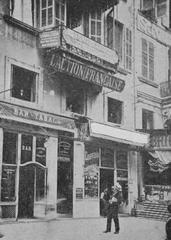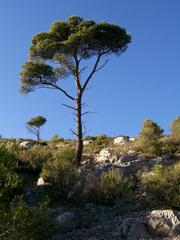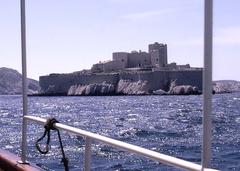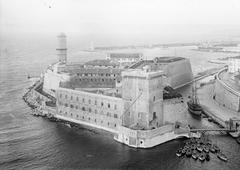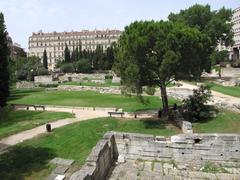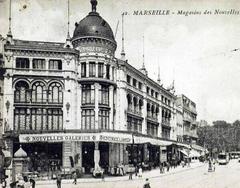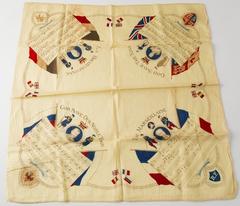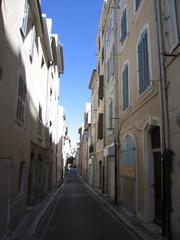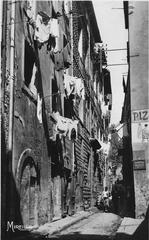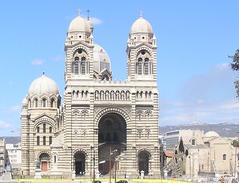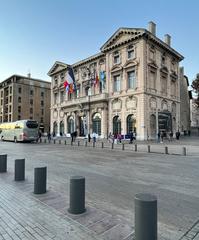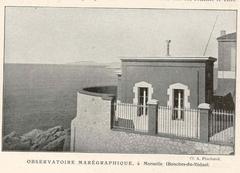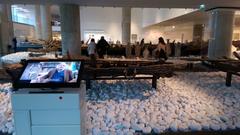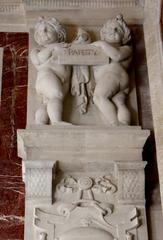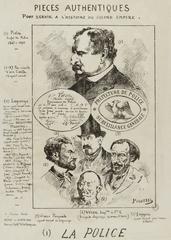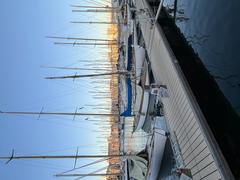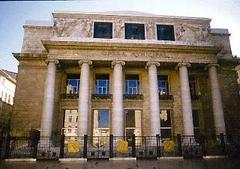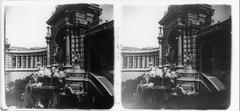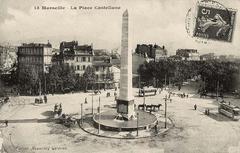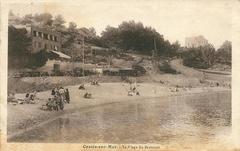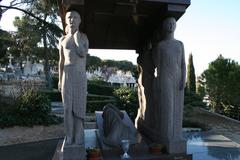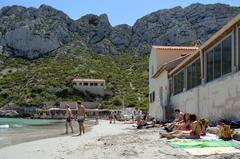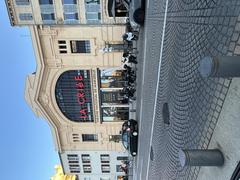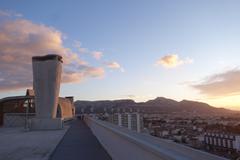Visiting the 16th Arrondissement of Marseille, France: Complete Guide with Hours, Tickets, and Attractions
Date: 14/06/2025
Introduction
The 16th Arrondissement of Marseille, situated in the city’s northwest, offers an authentic and multifaceted experience that diverges from the busier, tourist-centric districts of central and southern Marseille. This area, rich in maritime history and cultural diversity, invites visitors to explore vibrant coastal neighborhoods, striking urban landscapes, and a robust culinary scene. Whether you’re a history enthusiast, art lover, or foodie, the 16th arrondissement provides a captivating journey into the city’s lesser-known, but equally rewarding, quarters (Britannica; Marseille Tourism).
This comprehensive guide details the arrondissement’s historical evolution, social significance, key attractions, and practical information on visiting hours, tickets, safety, and accommodation. Dive into Marseille’s artistic and culinary heritage, discover tranquil seaside promenades, and engage with the vibrant local community for a truly memorable visit (Country & Town House; Time Out Marseille).
Table of Contents
- Historical Overview
- Social and Cultural Identity
- Urban Landscape and Main Neighborhoods
- Top Attractions and Historical Sites
- Visiting Hours, Tickets, and Accessibility
- Unique Experiences and Photography
- Socioeconomic Context and Challenges
- Practical Visitor Tips
- Culinary Highlights and Accommodation
- Frequently Asked Questions (FAQ)
- Summary and Final Tips
- References
Historical Overview
Marseille’s 16th arrondissement traces its roots from ancient Greek settlement to modern urban development. Long a rural periphery, the area was shaped by 19th- and 20th-century industrialization, port expansion, and waves of migration. Post-war urban planning introduced social housing estates such as La Castellane, which became home to diverse communities, including repatriates from Algeria and immigrants from North Africa and beyond (Britannica; Wikipedia: La Castellane).
Social and Cultural Identity
The 16th arrondissement stands out for its working-class heritage and multicultural vibrancy. North African, Comorian, Italian, and Armenian communities have left their mark on local markets, religious sites, and community organizations. Football is central to local life, with La Castellane famously being the childhood home of international football icon Zinedine Zidane (Wikipedia: La Castellane).
Community-driven festivals, street art, and music events foster social cohesion and celebrate the arrondissement’s diversity (Marseille Tourism).
Urban Landscape and Main Neighborhoods
The arrondissement comprises a dynamic mix of traditional villages, industrial remnants, and modern housing developments. Key neighborhoods include:
- L’Estaque: Once an independent fishing village, now known for its artistic legacy and stunning Mediterranean views.
- Saint-Henri & Saint-André: Quiet, residential areas with preserved rural charm and historic chapels.
- La Castellane: A large housing estate emblematic of Marseille’s post-war urbanism and social complexity (Marseille Tourism).
Top Attractions and Historical Sites
L’Estaque: The Artistic and Maritime Gem
L’Estaque has inspired artists like Paul Cézanne and Georges Braque, whose paintings helped shape Impressionism and Cubism. The “Chemin des Peintres” (Painters’ Trail) guides visitors through the village, with panels displaying reproductions of famous artworks at their original locations. The trail is free and accessible from dawn to dusk (Marseille Tourism).
The old port remains a hub of local life, with fishing boats, seafood stalls, and vendors offering specialties like “chichis frégis” and “panisses.” L’Estaque’s pebble beaches and seaside promenades provide relaxing settings for swimming and sunset walks.
La Castellane
Built in the 1960s to accommodate returning French citizens from Algeria, La Castellane is a symbol of post-war urbanization and social change. While not a typical tourist area, it is significant for its cultural history and as Zidane’s childhood neighborhood (Wikipedia: La Castellane).
Saint-Henri and Saint-André
Retaining a village ambiance, these neighborhoods feature historic farmhouses, narrow lanes, and the 19th-century Église Saint-Henri, open to visitors during regular service hours (typically 9:00 AM–12:00 PM, 4:00 PM–6:00 PM; free entry).
Additional Sights
- Chapelle Notre-Dame-des-Anges: Hosts art exhibitions; open 10:00 AM–6:00 PM, free admission.
- Fort de la Crèche: An old military fortification; generally open 9:00 AM–5:00 PM, check locally for ticketed tours.
Visiting Hours, Tickets, and Accessibility
- Neighborhoods and Promenades: Freely accessible year-round.
- Churches and Monuments: Limited hours; check official sites for details.
- Museums and Special Exhibitions: May require tickets; book in advance during high season.
- Public Transport: TER trains from Marseille Saint-Charles to L’Estaque; RTM buses (lines 35, 36, 70) connect to central Marseille (Tourist Secrets).
- Accessibility: Main roads and public spaces are accessible, but hilly and narrow streets may pose challenges for those with mobility issues.
Unique Experiences and Photography
- Chemin des Peintres: Capture the light and colors that inspired Cézanne.
- Sunset at L’Estaque: Ideal for photographs of the Mediterranean and village rooftops.
- Local Festivals: Attend the “Fête de la Saint-Pierre” (late June/early July) and open-air markets for a taste of community life.
Socioeconomic Context and Challenges
Like many urban peripheries, the 16th arrondissement faces higher unemployment and social challenges, particularly in large housing estates such as La Castellane (Marseillesecrete). Community organizations and renewal projects support integration and improved living conditions.
Practical Visitor Tips
- Safety: Exercise standard urban caution, especially at night and in less-frequented areas. Stick to main roads and tourist sites (Offbeat France).
- Transport: Rely on public transport for easy and affordable access.
- Etiquette: Greet shopkeepers, dress modestly in religious sites, and try a few words of French for positive interactions.
- Currency: Euros; carry some cash for markets and small shops.
- Weather: Mediterranean climate; best visited in spring or early autumn.
Culinary Highlights and Accommodation
Gastronomy
- Chichis Frégis & Panisses: Iconic local street foods available at L’Estaque’s waterfront (Country & Town House).
- Seafood Restaurants: Family-run bistros offer fresh fish and regional specialties such as bouillabaisse.
- Markets: Saturday mornings, 7 am–1 pm; vibrant atmosphere and local produce.
Recommended Restaurants
- Chez Magali (L’Estaque): Fresh seafood and Provençal classics.
- Le Mange-Tout (Saint-André): Daily specials with a local twist.
- Le Bistrot du Port: Modern Mediterranean cuisine near the marina (Time Out Marseille).
Accommodation
- Boutique Hotels: Hôtel Le Mistral (L’Estaque), Villa Valflor (Saint-Henri).
- Vacation Rentals: Airbnb and short-term rentals offer sea views and authentic local living (Miss Tourist).
- Unique Stays: Renovated fishermen’s houses for a maritime experience.
- Budget Options: Guesthouses and budget hotels provide affordable alternatives (Travel Hotel Expert).
Frequently Asked Questions (FAQ)
Q: What are the visiting hours for main attractions?
A: Outdoor sites are generally open all day. Chapelle Notre-Dame-des-Anges: 10:00 AM–6:00 PM; Église Saint-Henri: 9:00 AM–12:00 PM, 4:00 PM–6:00 PM. Always check current details.
Q: Is the 16th arrondissement safe?
A: Yes, especially in tourist areas. Exercise caution at night and in unfamiliar neighborhoods.
Q: How do I reach L’Estaque from central Marseille?
A: TER train from Saint-Charles station or RTM bus lines 35, 36, 70.
Q: Are there entrance fees for attractions?
A: Most outdoor sites are free; museums and special exhibitions may require tickets.
Q: Where can I find local street food?
A: L’Estaque’s port and seafront kiosks sell chichis frégis and panisses year-round.
Summary and Final Tips
The 16th arrondissement offers an authentic slice of Marseille life—where history, art, and culinary traditions meet against a backdrop of scenic Mediterranean vistas. From the artistic legacy of L’Estaque to vibrant markets and welcoming bistros, this district rewards visitors with unique experiences away from the crowds. Plan your trip by consulting visiting hours and ticket information, use public transport for easy access, and immerse yourself in the neighborhood’s festivals and daily rhythms (Offbeat France; Tourist Secrets).
For an enriched experience, download the Audiala app for interactive guides, maps, and local recommendations, and explore our related articles for more Marseille travel inspiration.
References
- Britannica
- Marseille Tourism
- Marseille Tourism: The Districts of Marseille
- Tourist Secrets
- Country & Town House
- Time Out Marseille
- Offbeat France
- Miss Tourist
- Travel Hotel Expert
